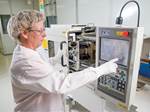Does ‘Scientific Molding’ Make a Difference?
Medical molder MRPC, for one, swears by it.
MRPC, for one, swears by it. The results, the firm's managers say, are less scrap, faster startups, more repeatable setups, more stable processing, and better troubleshooting. As reported in our February Processor Strategies, this $20 million medical custom injection molder in Butler, Wis., launched a program last year to train and convert all its 140 employees to the philosophy and methods of Scientific Molding. Two of its managers, Jeff Randall, v.p. of engineering, and Brunson Parish, senior process engineer, received formal training in Scientific Molding from some of the best trainers and consultants in the industry. Now they are training the rest of the staff—even material handlers—in what Parish calls a “business-changing method”—one that's becoming almost a necessity in the highly quality-conscious medical industry. There’s a white paper on the subject on the company’s website.

Related Content
-
How to Optimize Injection Molding of PHA and PHA/PLA Blends
Here are processing guidelines aimed at both getting the PHA resin into the process without degrading it, and reducing residence time at melt temperatures.
-
‘Monomaterial’ Trend in Packaging and Beyond Will Only Thrive
In terms of sustainability measures, monomaterial structures are already making good headway and will evolve even further.
-
Foam-Core Multilayer Blow Molding: How It’s Done
Learn here how to take advantage of new lightweighting and recycle utilization opportunities in consumer packaging, thanks to a collaboration of leaders in microcellular foaming and multilayer head design.













